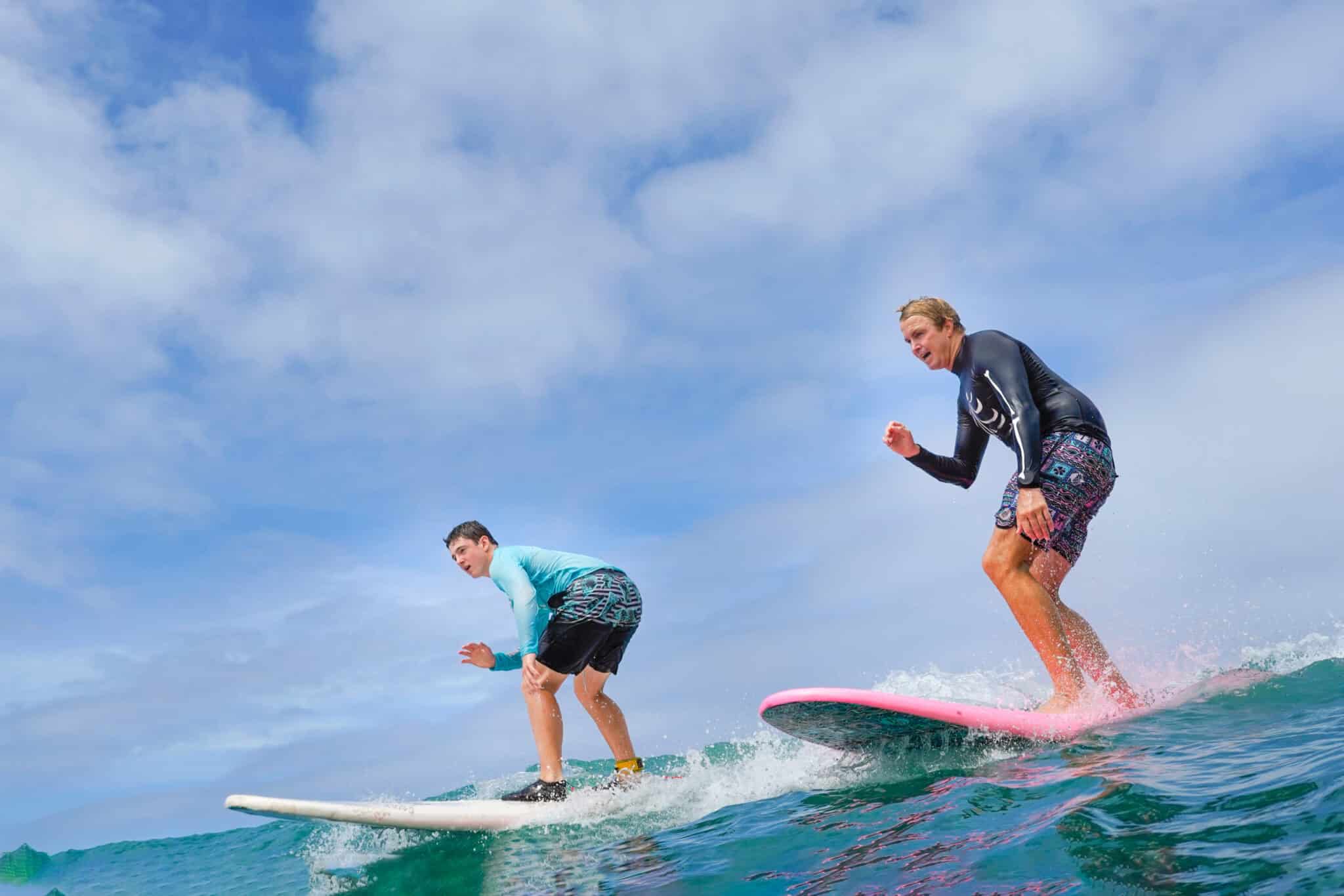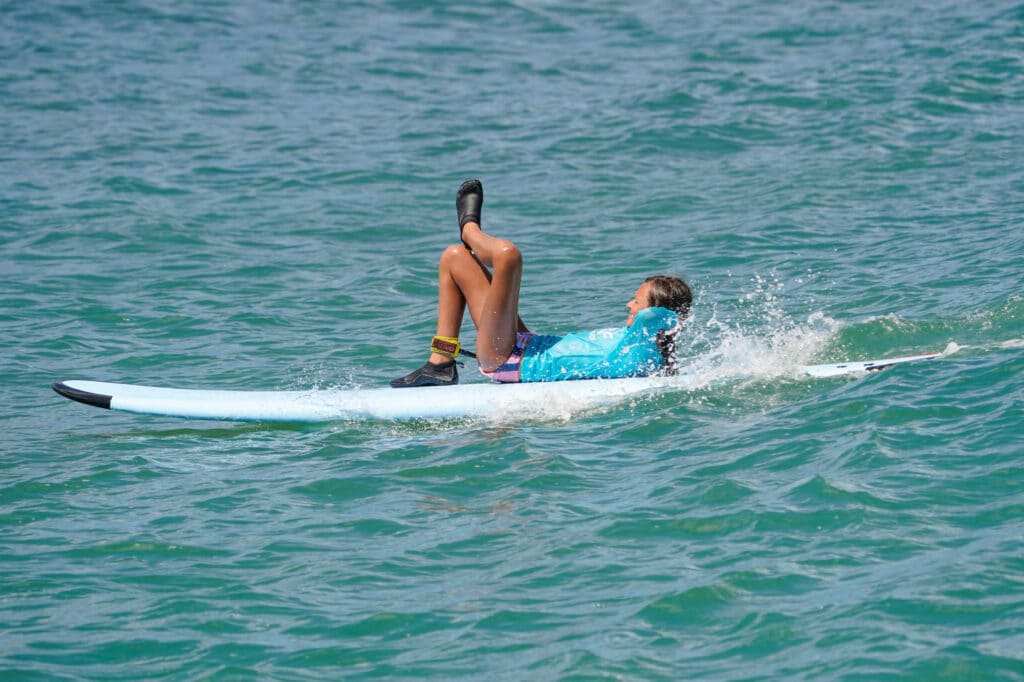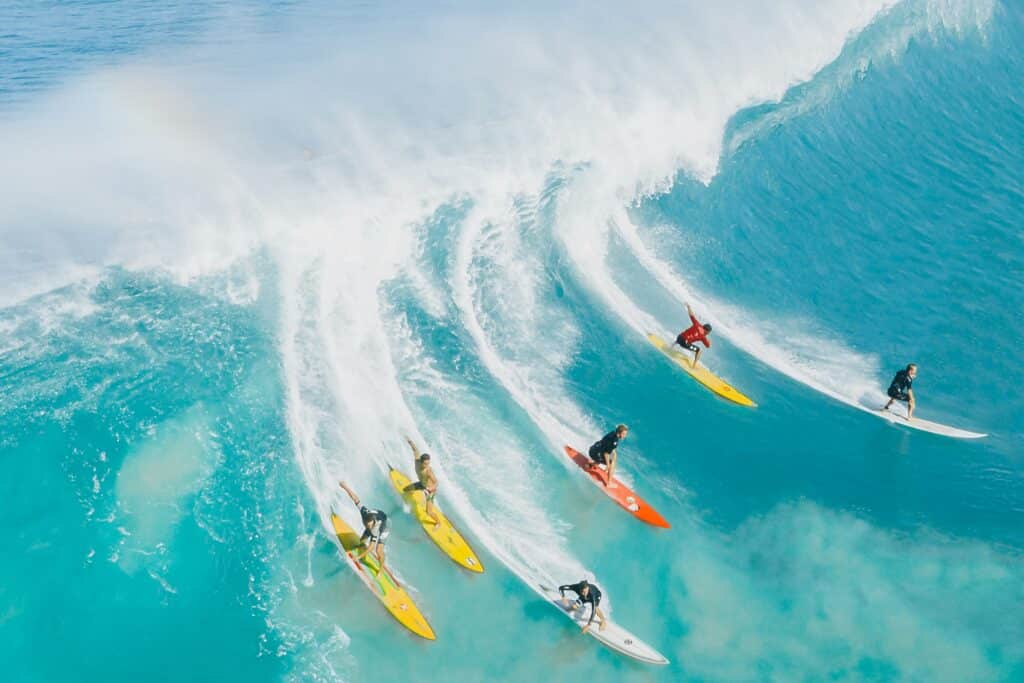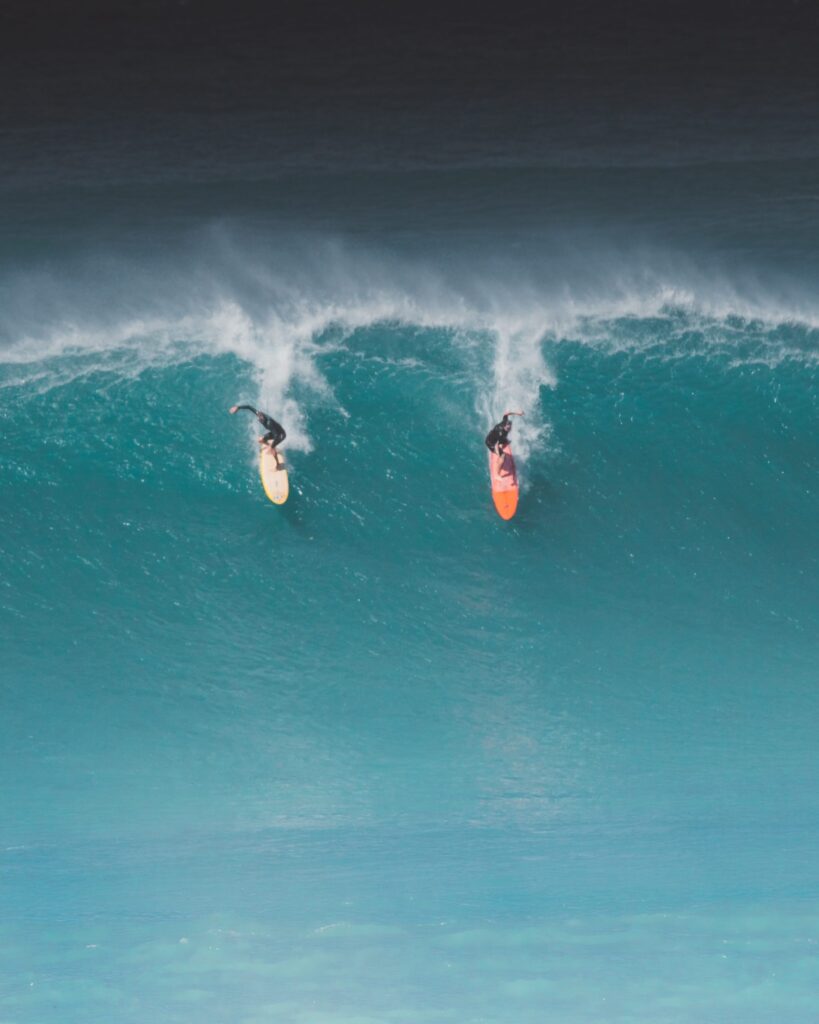
For new surfers, learning to surf can be a bit intimidating. If the crowd factor at your local break isn’t enough to keep you out of the water, the fear of getting in the way or angering the locals will surely keep you on dry land. While no surfer likes to see swarms of beginners at their local break, it’s understood that everyone is a beginner at some point. As long as you abide by the unwritten rules of surf etiquette, you won’t have a problem. While surf etiquette may seem exclusionary by nature, the rules of the lineup are enforced for a single purpose—keeping surfers safe. If you are new to surfing, continue reading below for Surf Etiquette 101: Understanding the Unwritten Rules of the Lineup.
Know when to paddle out
Perhaps the most important rule of surf etiquette is knowing when not to paddle out. If you show up to your local break and the waves are clearly out of your league, it may be wise to take the session off. When paddling out, it’s important to consider your safety and the safety of those around you. As a beginner at an advanced break, you may be endangering other surfers in the lineup. Instead of paddling out, watch how the better surfers navigate the lineup. Pay attention to where they position themselves, how they spot and catch waves, and try to emulate their techniques during your next session.
Be sure you’re on the right equipment
While it may be tempting to ride the latest high-performance model plugged by your favorite professional surfer, pick up a longboard instead. Riding a longboard for the first few months of your learning process will allow you to catch more waves, master popping up quickly, and learn to ride cleanly down the line. Longboards are also great teaching tools for learning basic maneuvers.
Wait your turn

If you’re paddling out to a new lineup, especially when you’re traveling, the first part of your initial session should be observing the lineup. Try to identify the peaks, the pecking order at the lineup, and where the channels are before heading into the water. Once you’re in the lineup, let a few waves go by you without paddling for them. Don’t jockey for position with locals before you’ve been out in the lineup for a decent amount of time. Take what comes to you and wait your turn.
Respect priority and don’t drop-in

Dropping in on someone is easy to avoid, but only if you understand priority. As we’ve mentioned before, the surfer taking off closest to the wave’s peak has priority. So, every other surfer down the line must yield to that surfer as they are dropping in and riding down the line.
Don’t snake

Like dropping in on another surfer, snaking is frowned upon in every lineup. Snaking is when a surfer paddles around another surfer as the wave is approaching to get priority. While advanced surfers will paddle far and wide to catch waves at the ideal spot, back paddling is widely frowned upon. There’s an important distinction between knowing when a surfer is out of position and capitalizing on their missed wave and snaking a wave. It takes years of experience to be able to make that call.
Be mindful of your board
The most dangerous thing in the lineup is not the powerful surf, the lurking sea creatures below, or even the reef—it’s your board. Surfboards are hard, pointy, and have sharp fins. Colliding with your board at speed can cause serious damage to you or another surfer. To keep yourself and those around you safe, always make sure you’re mindful of your board. Hold on tightly when you duck dive or turtle roll, and never ditch your board in a crowd.
If you follow surf etiquette and respect the locals, you can surf almost anywhere in the world within your ability. The unwritten rules of the lineup are not meant to be exclusionary but precautionary. To book your north shore surf lesson to learn surf etiquette and more from our surf coaches, head to our website. To book your stay on the North Shore, check out Turtle Bay Resort.



